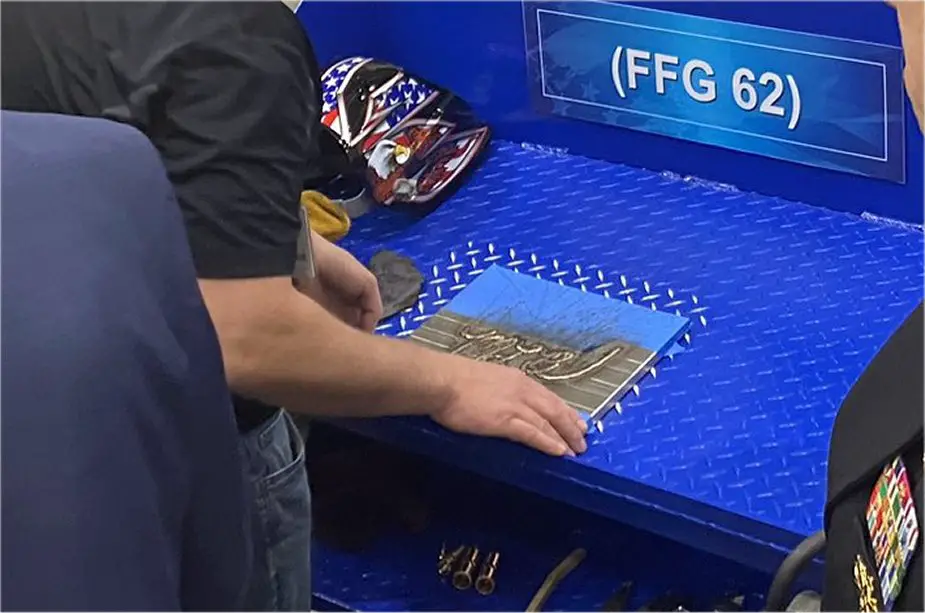According to information published by Fincantieri on April 15, 2024, Navy officials, government leaders, and industry representatives gathered to celebrate the keel laying of the future USS Constellation (FFG 62).
Follow Navy Recognition on Google News at this link
 Keel-laying of the future frigate USS Constellation. (Picture source: Admiral James G. Foggo)
Keel-laying of the future frigate USS Constellation. (Picture source: Admiral James G. Foggo)
The ceremony was hosted in the shipyard’s Building 34, a part of Fincantieri’s recent $350 million investment in upgrading its facilities. This expansion is part of a broader effort by Fincantieri, which has invested more than half a billion dollars since 2009 to modernize its operations and establish itself as one of America’s leading shipyards.
The USS Constellation is the forefront of a contract awarded to Fincantieri in April 2020, valued at $795 million for the lead ship with options for nine additional vessels. Five frigates currently on order and potential for the contract to reach a total value of over $5.5 billion.
About the class
Due to a tight timeline set for 2020 to commence the purchase of the first FFG(X), the U.S. Navy decided against creating a brand new design from scratch for its frigate platform. Instead, the Navy opted for modifying an existing "parent" ship design to meet specific requirements, as noted in a Request for Information (RFI) which stated an intent to evaluate existing designs that could be adapted to the unique capabilities needed by the Navy.
The envisioned frigate, the FFG(X), was designed to operate seamlessly with the Navy's larger vessels such as aircraft carriers, integrating advanced sensor systems with the fleet to enhance the tactical overview available to naval groups. This integration would allow the FFG(X) to support strike groups and surface action groups effectively, while also being capable of independent operations, defensively robust and connected to the fleet's tactical grid.
The design specifics for the new frigate included equipping it with at least 32 Mark 41 Vertical Launch System cells, which are primarily used for anti-air warfare, enabling the ship to perform defensive and escort missions effectively.
The Navy's requirements for the frigate also encompassed multi-role capabilities such as surface warfare, submarine detection, protection of convoy ships, and advanced electronic warfare, both active and passive, to counter various threats including swarming small boat attacks.
A new propulsion system combining Diesel Electric and Gas (CODLAG) was selected for the class, a first for U.S. Navy ships. This choice was influenced by the need to mitigate the risk of engine failure, an issue that had affected the littoral combat ship (LCS) program.
The complications and high maintenance costs associated with the LCS program were significant factors leading to the development of the Constellation program, which aimed to address these and other operational challenges.
Regarding the competitive process for the frigate's design, in February 2018, the Navy selected five shipbuilders from several proposals and awarded them contracts to develop conceptual designs. These companies included Austal USA, Fincantieri Marine Group, General Dynamics, Huntington Ingalls Industries, and Lockheed Martin. Lockheed Martin later withdrew from the competition in May 2019.
Ultimately, Fincantieri Marinette Marine's design based on the FREMM frigate was selected.



